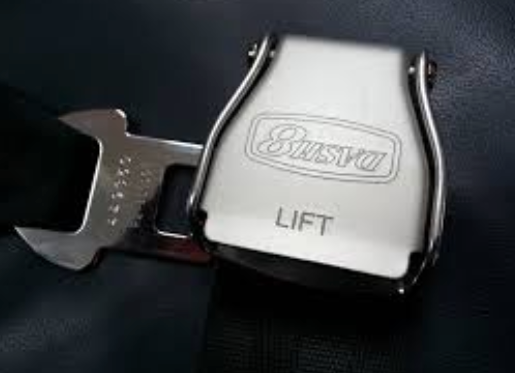
With all the attention that seat belts get, it comes as a surprise that many people do not know how seat belts work—at least internally. Most people know the basics of how a seat belt can be stretched, pulled over the lap and the chest and shoulders, then inserted into the buckle, but they do not know much else. Below I will give the in-depth details about how a seat belt mechanism operates, in case you too do not know. Hopefully, after reading this article you will no longer have the question, “How do seatbelts work?”
First and foremost, I’ll give you the proper names for the important seat belt parts. The male part of the seat belt that inserts into the buckle is called the seat belt retractor. The area that it inserts into is called the seat belt pretensioner, or buckle. The actual strap of the seat belt is called the material webbing. All serve important roles in the overall function of the whole seatbelt.
The way that the pretensioner works are that it locks the seat belt in place when the car comes in contact with another vehicle or object or when the vehicle comes to a rapid stop. When the sensors of a vehicle detect a sudden deceleration or impact, the pretensioner uses a small explosive charge to initiate a concealed piston—which then quickly drives the spool around and gets rid of any slack in the seat belt. The seat belt pretensioner basically positions the passengers of a vehicle in their seats to get maximum protection from possible airbag-incurred injuries.
The seat belt retractor works in its way. It is made up of a spring, a sensor, some gears, a pyrotechnic explosive device, and a mechanism that is manufactured to also lock up when a collision occurs. The retractor’s main responsibility is to lock up in the case of a sudden stop or collision. It also connects to the airbag system; it works to keep an occupant as far away from the airbags and seated in their seat correctly. In the event of a crash, the gas charge in the retractor goes off—which is programmed into the vehicle’s SRS airbag module.
If you happen to experience any issues with your seat belt mechanism—whether it be with your seat belt pretensioner, retractor, webbing, or something else, know there is someone who can help you. You can turn to the company Safety Restore by logging onto safetyrestore.com. When it comes to seat belt issues, it is better to get them taken care of sooner than later.
